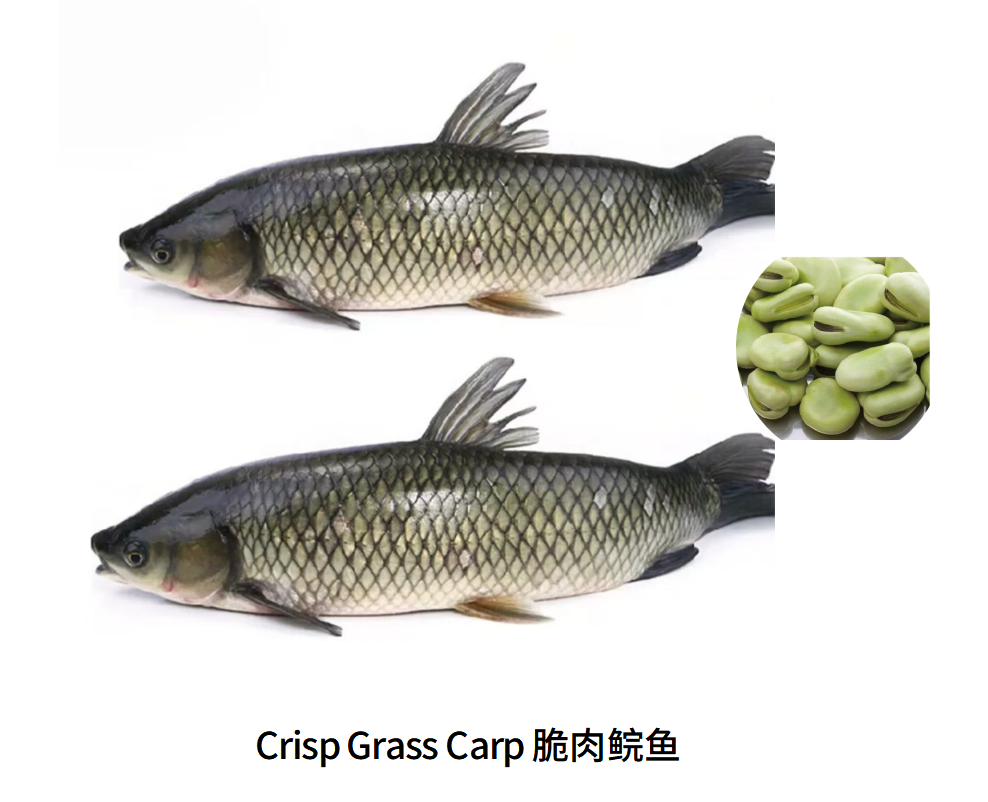1. Differences and Characteristics of Red Tilapia vs. Tilapia Species
1.1 Physical Appearance Differences: Unique Coloration and Body Shape
Red Tilapia, also known as Rainbow Tilapia, is a hybrid species resulting from the crossbreeding of Nile Tilapia and Mozambique Tilapia. Its hybrid nature varies depending on the region and breed. The most notable feature of Red Tilapia is its vibrant coloration, which can range from pink, red, light pink, orange-red, to golden yellow. In contrast, regular Tilapia typically has a gray or olive-green color, which is relatively uniform. The striking colors of Red Tilapia make it visually appealing in the market, adding significant value to the product.
Regarding body shape, Red Tilapia is laterally compressed with a smaller mouth and a lower jaw that extends slightly beyond the upper jaw. Its dorsal fin is long, the pectoral fins are short and do not reach the anus, and the caudal fin is round and not forked. Depending on the strain, Red Tilapia can vary in size and shape, with the main strains being Nile Tilapia type, Okinawa Tilapia type, and Mozambique Tilapia type. Compared to regular Tilapia, Red Tilapia is more compact with a smaller head, higher back, and thicker body, giving it a more streamlined appearance.
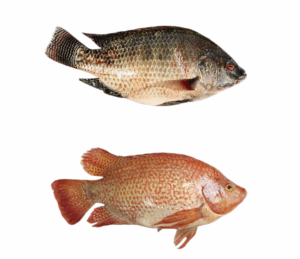
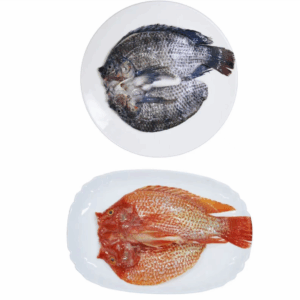
It is important to note that the market value of Red Tilapia can also vary based on its color. Studies show that pink-colored Red Tilapia grows the fastest, followed by orange-red, while golden-yellow grows the slowest. Additionally, coloration is linked to disease resistance, with pink-colored fish having a lower survival rate and weaker resistance, while orange-red fish have medium resistance, and golden-yellow fish have the highest survival rates, especially during overwintering. The coloration is also associated with the color of the abdominal membrane, with pink, orange-red, and black-spotted fish having white abdominal membranes, while golden-yellow fish with black spots tend to have black or grayish-black membranes.
1.2 Growth Characteristics Comparison: Speed and Adaptability
Red Tilapia shows significant advantages in growth performance. Red Tilapia grows quickly and can reach a size of 150–750 grams within a single growing season. In comparison, regular Tilapia, such as Okinawa Tilapia, also grows fast but typically requires a longer growing period to reach similar sizes. Although other Tilapia species like the GIFT Tilapia may grow slightly faster in some environments, Red Tilapia generally demonstrates better adaptability in specific conditions.
Research has shown that the growth speed of Red Tilapia is related to its color, with pink-colored Red Tilapia growing the fastest, followed by orange-red and golden-yellow. While growth is influenced by color, it is mainly governed by genetic factors. Furthermore, growth speed is also influenced by farming environment, feed quality, and management levels.
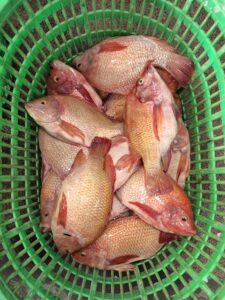
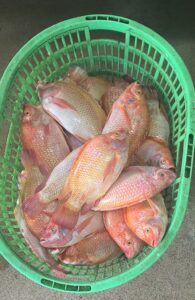
Red Tilapia also inherits the strong adaptability of regular Tilapia, such as tolerance to low oxygen levels, with a lower suffocation threshold, and a wide range of salinity tolerance (0–30‰). Their optimal temperature range is between 15–38°C, with a lethal temperature threshold of 7°C for the lowest and 42°C for the highest. In comparison, regular Tilapia species like Nile Tilapia have a narrower optimal temperature range of 24–35°C.
1.3 Environmental Requirements for Growth: Wide Salt Tolerance and Temperature Adaptability
Red Tilapia is a tropical species with a broad salinity tolerance, making it capable of thriving in a range of environments, from freshwater to brackish and even seawater. This salinity tolerance ranges from 0–30‰, which allows Red Tilapia to be raised in both freshwater and slightly saline waters. In contrast, regular Tilapia species like GIFT Tilapia are typically suited to environments with salinity levels of 0–12‰, and they cannot be raised in environments where the salinity exceeds 32‰.
Red Tilapia’s optimal growth temperature is between 25–34°C, and it can tolerate a temperature range from 15–38°C. However, if the temperature drops below 16°C, their swimming slows down, and they cease feeding or become inactive. Regular Tilapia, like Nile Tilapia, has a more narrow temperature range (24–35°C).
Red Tilapia’s environmental adaptability extends to its tolerance for water quality. It can thrive in a pH range of 6.5–8.5 and can be raised in various water bodies such as ponds, lakes, reservoirs, and cages, even in poor water quality conditions. This remarkable adaptability makes Red Tilapia one of the most widely farmed fish species globally.
In terms of diet, Red Tilapia is omnivorous with a preference for plant-based foods. In natural conditions, it primarily feeds on plankton but also consumes zooplankton, attached algae, and organic matter. Under artificial farming conditions, it can consume a variety of feeds, including soybean meal, peanut cake, rice bran, cornmeal, fishmeal, and compound feeds. In contrast, regular Tilapia is also omnivorous but tends to prefer more animal-based food sources.
2. The Tilapia Processing Industry Chain Overview
2.1 Catching and Preliminary Processing: From Fishpond to Processing Plant
Tilapia is typically caught using drag nets, and large-scale farms may use specialized catching equipment. Due to its strong tolerance to low oxygen environments, Tilapia can survive for an extended period in water tanks after being caught, making transportation easier. For live fish sales, a short holding period is required to allow the fish to expel waste and improve the quality of the meat.
Once freshly caught, Tilapia is transported to processing plants for immediate processing. During transportation, it is crucial to control water temperature, oxygen levels, and fish density to ensure survival rates and freshness. Large processing plants often set up temporary processing stations near farms for initial grading and packaging, which reduces transportation costs and minimizes fish damage.
Upon arrival at the processing plant, the first step is the raw material inspection. Fresh or ice-fresh Tilapia is required to have intact bodies, clear eyes, bright corneas, red gills, firm scales, and elastic flesh. The fish should weigh at least 500 grams to ensure quality after processing.
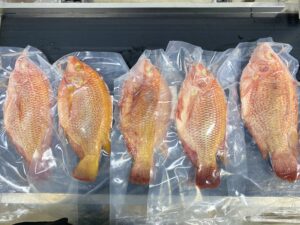
The initial processing includes cleaning, de-scaling, de-heading, and gutting. First, the fish is washed with fresh water to remove the head, tail, fins, and internal organs. Then, the body surface is cleaned of slime and impurities, and the abdominal cavity is washed to remove blood and other contaminants. The water temperature should not exceed 15°C during processing. During this step, any fish that do not meet freshness or quality standards are discarded.
Special attention is required when processing Red Tilapia to maintain its vibrant coloration. Studies show that maintaining the red color of Red Tilapia requires continued selective breeding to ensure the color is passed down through generations. Therefore, during processing, chemical substances that may cause color loss should be avoided, and physical methods should be preferred for processing.
Red Tilapia Export by Zhuhai Chenghuifeng Agricultural Science and Technology Co., Ltd.
Zhuhai Chenghuifeng Agricultural Science and Technology Co., Ltd. exports high-quality Red Tilapia (Frozen Whole and GGS) to regions including the EU, Canada, and New Zealand. The fish’s bright red color, especially in the more vibrant varieties, plays a significant role in determining its market price. Red Tilapia is often considered a premium product due to its appealing color, although regular Tilapia remains affordable and suitable for family consumption.
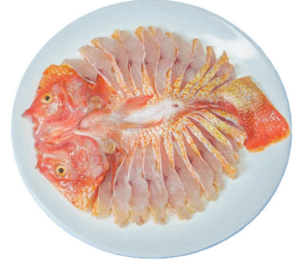
Explore our full range of seafood products https://www.chfseafood.com/product-category/products/

